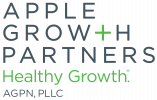
By Dave Gustafson, J.D. | Principal – Business Valuation
One of the biggest decisions a business owner can make is how they want to handle the succession of their company. While many employees can retire and move on with their life, an owner has to consider several things, including who is going to succeed them and how this succession will impact their company.
Picking the right succession plan for you depends on your specific situation. If you’re looking for a more controlled succession that allows you to phase out of the company when you’re ready, an Employee Stock Ownership Plan (ESOP) might be the best choice for you.
Why Should You Choose an ESOP?
There are a variety of special attributes about an ESOP that make it attractive to certain business owners who are doing succession planning or other ownership transitions. One of the biggest benefits is that an owner can continue to maintain some control even after selling the company. An owner selling a third party runs the risk of having to answer to a new boss as soon as the purchase agreement is signed.
Nobody wants to be told how to run their business. With an ESOP, an owner has an ability to dictate their role with the company post sale. An ESOP will allow owners greater flexibility to determine their own retirement timeline. This means you can still play a sales role, serve as an advisor, or do anything else that allows you to stay active in you company while you ease yourself away when you’re ready.
Another benefit of an ESOP is that it’s a relatively private process. A third party sale means that you’ll have several prospective buyers digging through your information. With an ESOP, you’ll hire a trustee and negotiate transactions without disclosing sensitive information to multiple suitors, some of whom may be competitors.
ESOPs also have several financial benefits. Selling shares in a privately held company to an ESOP allows a business owner to diversify their wealth and lower their financial risk. There are also some tax advantages to using an ESOP, as payments to the ESOP to buy stock can be tax deductible. That makes it easier to sell to an ESOP from a cash flow standpoint. Additionally, owners selling shares of a C-corporation to an ESOP can defer capital gains on the sale proceeds when selling 30% or more of their ownership interest. As an S-Corporation, the company can avoid having to fund the payment of Federal income taxes post transaction, which creates additional cash flow to finance the purchase price.
Who are the Best Candidates for an ESOP?
To help figure out who is best suited for an ESOP, think of who you want to run your company after you retire. An ESOP allows you to pass your business on to the employees who have helped you build it. This means that all of your employees will be able to buy stock in the company and be even more invested in its success than before while you get to dictate the process.
However, an ESOP is not for everyone. Since an ESOP puts your employees in control, it’s important that you have a strong management team to carry on your legacy and keep the business profitable. However, you’ll have more freedom to groom the right team to succeed if you don’t have to worry about third party buyers taking over and telling you what will happen.
Additionally, good candidates for an ESOP include companies with large enough employee headcount to allocate shares in a way that does not create a burdensome repurchase liability as employees leave the company.
There’s also the matter of whether or not any children may succeed you. If you have a child, or multiple children, who plan on taking over after you retire, you would be better suited with other succession planning options. However, children are not always guaranteed to be either willing or suited for a leadership role. If this is the case, your children can still be part of the successor group with an ESOP and you can feel comfortable that your business is in the right hands.
Exactly What is an ESOP?
At its core, an ESOP is a qualified retirement plan designed to invest primarily in the stock of the corporate employer. Since it’s a qualified plan, there are some qualified rules that the company will have to follow.
One big difference between an ESOP and other succession plans is that the ESOP cannot pay more than fair market value. As a trust, your ESOP would have a trustee that would negotiate each transaction and annual administration of benefits based on an independent appraisal. Appraisals occur with each transaction and on an annual basis.
Since an ESOP is a trust with potential tax benefits, there are some legal nuances to the plan. However, there are ESOP experts who can help guide you through the plan and prepare your business for the future.
When Should I Start the ESOP Process?
Business owners should start planning for succession around five years before they’re ready to be done. It will normally take an ESOP five years to get established enough to allow you to start curtailing your role and make sure you get paid. However, starting the ESOP process doesn’t mean that you have to be out after that five-year window. You can stay on long past the ESOP is established and ease out of your role at your own pace.
An ESOP offers many benefits for business owners looking to plan for the future. The ESOP experts at Apple Growth Partners can guide you through a process to determine if an ESOP is feasible for your business and help you adhere to the various legalities that need to be observed in the process. Contact me today to start the ESOP process for your business.


